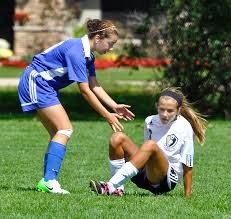Spinal cord injuries are among the most serious and life-altering injuries a person can sustain. The spinal cord, a complex bundle of nerves, is the primary pathway for communication between the brain and the rest of the body. When it’s damaged, a patient could be...
People who suffer from varicose veins, chronic venous insufficiency (CVI), and other related health conditions know that their symptoms involve more than just cosmetic concerns. They also frequently cause pain, swelling, and more serious health problems. For these...
Our smartphones, tablets, and laptops have connected us to the world in ways that we could never have imagined. We carry our offices, our social lives, and our entertainment with us everywhere we go. But this constant connectivity often comes with a trade-off, one...
How to Avoid Getting a Concussion

A concussion is a serious brain injury that is, unfortunately, common among athletes and in contact sports. This brain injury occurs when a person collides with another person, an object, or the ground with a great amount of force.
A person who suffers a concussion doesn’t always lose consciousness, and there are no sure signs to help diagnose the injury. However, there are symptoms that can be telling of a concussion, such as a headache that gets progressively worse, confusion, fuzzy vision, dizziness, amnesia, sensitivity to light and sound, and difficulty concentrating.
While there’s no way to completely avoid a concussion, there are precautions you can take to reduce the risk.
Wear Protective Gear
Be sure to wear the proper protective gear when participating in a sport or any physical activity. It’s important to you wear a helmet during an activity where you’re at risk of head trauma. It’s also vital to you protect the rest of your body with padding and equipment if the activity involves contact with other players. A concussion doesn’t only occur from trauma to the head; it can happen from a blow to another part of the body as well.
Check Protective Gear for Fit/Replace It
Your protective gear will only do its job if it fits properly. The general rule of thumb is that your gear fits snug against your body so it doesn’t move around easily but not too tightly that it’s uncomfortable. When fitting your protective gear, talk to professionals at the sporting goods store or discuss with your coach to ensure the proper fit.
Just like shoes and clothes, your protective gear can wear out. Over months of constant use and wear and tear, the equipment becomes less effective at protecting your body. It’s crucial to replace your gear every season so it protects you the way it’s designed to. If you notice that your equipment wearing out during the season, you may need to replace it again.
Practice Proper Tackling Methods
During a sport that involves contact, you’ll be matched up with another player and striving to defeat them. If it’s your job to tackle that person, be sure to use the correct form when doing so. Your coaches will teach you how to tackle correctly, so be sure to practice these methods and keep the proper form. Injuries most often occur when you stray away from using proper form.
Practice Good Sportsmanship
Good sportsmanship is necessary to avoid injuries, especially concussions. While being aggressive is part of the game, losing your temper and displaying poor sportsmanship can open the possibility of injuries. Be sure to keep your temper in check and only be as aggressive as necessary.
Concussions can’t be avoided completely, but keep these tips in mind and you can reduce the risk of experiencing this injury.
If you’re dealing with a serious injury and you need orthopaedic surgery, you may be unsure where to turn. Download our eBook Your How-To Guide to Choosing an Orthopaedic Surgeon to learn how to select the right doctor for you.


